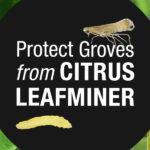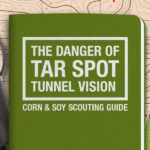Bringing Soybean Varieties to Market Faster
Faster development of high-performing soybean varieties gives growers the choice they need to plant the right seed in each field.

To succeed in today’s competitive market, soybean growers need access to varieties that allow them to diversify, spread risk and maximize their whole-farm return on investment potential. This means they need choice — and they need it fast.
“Choice has become very important because of the complexity of the farming operations today and the different needs each of these operations desire,” says Eric West, senior product manager for GROWMARK, Inc., in Bloomington, Illinois.
Michael Gill, director of conservation agriculture, Illinois Soybean Association, agrees. “Growers need selection when choosing a new soybean variety because they look for several factors, including yield, disease tolerance and herbicide resistance,” he says.
To address this need, a team at NK Seeds, powered by the Syngenta Seeds research and development engine, uses a proprietary soybean trait conversion system to fast- track varieties for commercial release.
“We have a really cohesive team that is nimble, hungry, and driven to collaborate and focus on what the growers’ needs are,” says Travis Kriegshauser, Syngenta soybean strategic marketing manager. “We always challenge each other to make sure everything we’re doing is in the best interest of growers’ successes.”
Condensing the Timeline
Traditionally, it takes six to seven years to develop a soybean variety and bring it to market. But at a state-of-the-art introgression facility in Clinton, Illinois, Syngenta breeders can bring new NK® soybean varieties to growers in as little as three years. The Seed to Seed in Seven Weeks concept speeds development, but at the same time does not sacrifice precision. This concept allows researchers to produce as many as seven generations of seed in one year, resulting in high-yielding germplasm, complete with an elite genetic pool that advances performance.
When a new trait is identified — for example, Enlist E3® soybeans, which offer a higher standard for weed control and yield performance — the team inserts that trait into its exclusive conventional germplasm. By using its elite conventional germplasm pool, NK is ahead of the competition because the germplasm will perform with the characteristics it was selected for: outstanding yield potential, defensive traits and agronomic strength. Researchers also can easily predict its performance, giving growers data-based confidence in the potential a new variety offers.
Choice has become very important because of the complexity of the farming operations today and the different needs each of these operations desire.
Tony Lorenzen, a grower in Edgar County, Illinois, started planting NK brand Enlist E3 soybeans in 2019. For him, the proof was in the performance.
“Sometimes, you plant a new product, and your yield suffers — but we didn’t see that with our NK brand Enlist E3 soybeans,” Lorenzen says. “They’re just good products with good seed quality. We’ll be all Enlist E3 soybeans again in 2021.”
The Seed to Seed in Seven Weeks process is straightforward. After Syngenta introduces the trait into the germplasm, planting in company greenhouses begins. Using cutting-edge greenhouse technology, Clinton researchers create ideal conditions to maximize the plant’s growth cycle. Three days after planting, seedlings emerge. On day seven, researchers take tissue samples and perform DNA analysis to determine whether the plant is showing the desired trait.
Moving Beyond Day Seven
Of course, the process of bringing seed to market doesn’t end on day seven. Researchers do additional work on the chosen varieties so that by days 20 to 23, they can perform fingerprinting and cross-pollination. The team then adapts the environment to push the plant’s reproductive life cycle and achieve the first generation of seed rapidly. Given the hardiness of the original germplasm, that first generation of seed then goes straight to the field for additional characterization and testing.
“We’ve refined and optimized a process that allows for trait introgression, population development, product evaluation, testing and launch so we can get to market as fast as — or faster than — anybody else in the industry, with a higher level of confidence that our products won’t fail when they get to our customers’ fields,” Kriegshauser says.
Because of innovative growth chambers that enable constant planting, pollinating, sampling and harvesting without fear of inclement weather, this conversion capability is used year-round and is how NK brought Enlist E3 soybeans to market faster than competitor brands.
Making Choices, Choices, Choices
To maximize their return on investment and remain profitable, growers may want to switch up their soybean lineup by adding new varieties from one or more of the leading trait platforms. Or maybe they need to address a specific management issue.
Cab Weaver of Adair County, Missouri, is one of those growers. “Everybody is looking for something new,” he says. “When I went with the Enlist E3 technology, it was to hopefully save some on spraying — get more bang for the buck. NK does a lot of research and development and has come up with a better product that can help us be more profitable. Growers are hearing about it because everyone wants to get more for less.”
NK also offers soybean varieties across the XtendFlex®, Roundup Ready 2 Xtend® and LibertyLink® GT27® platforms.
“NK brings a differentiated set of genetics to the marketplace to give growers choice — and growers always want choice,” Kriegshauser says.
And so do retailers like West whose primary goal is bringing customized, better-performing solutions to growers’ fields.
“The NK soybean brand has had success with our organization as well as with our customers due to the long history of proven performance in its germplasm as well as multiple trait options,” he says. “As a result, we’re able to give growers choices for what best fits their farms.”
Cover image: These rows of young soybeans in southern Wisconsin exhibit both health and vigor, which are qualities present in soybeans grown from seeds developed from the NK Seeds elite germplasm. Photography by Syngenta.
4 Min Read























